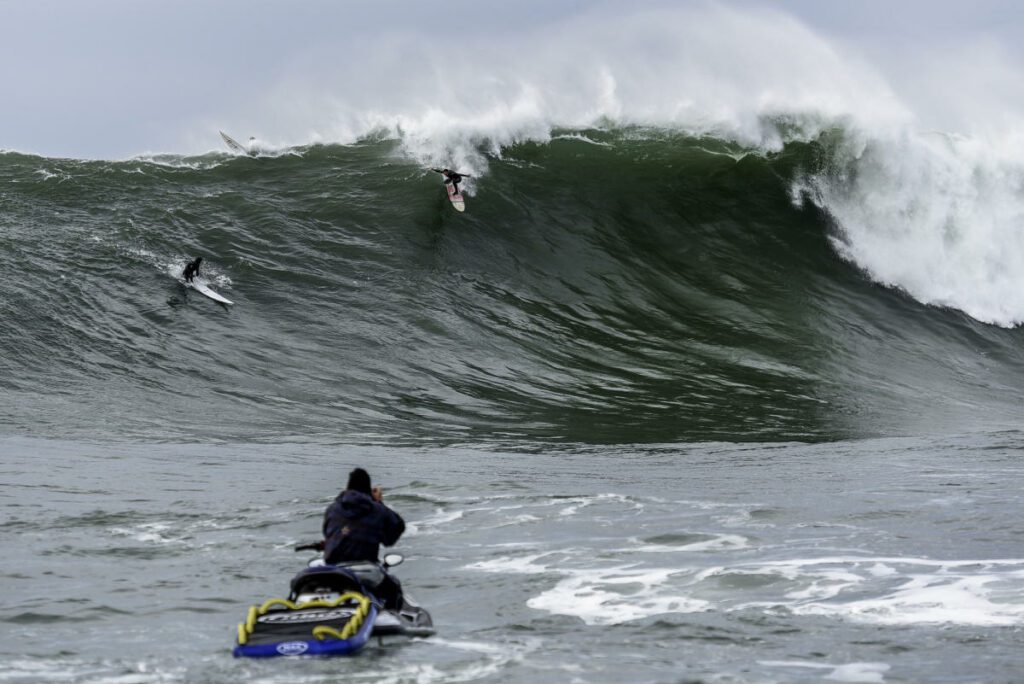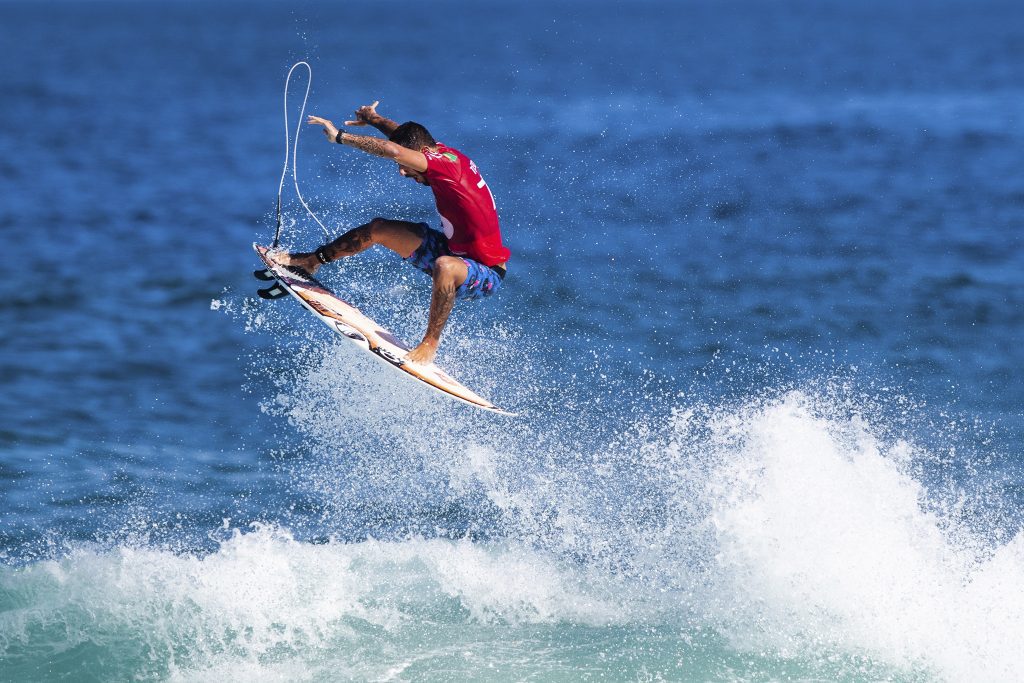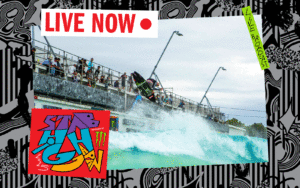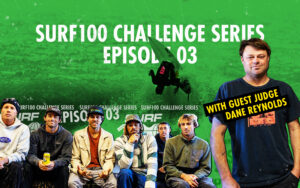The Brain Injury Preparation And Prevention Guide
Brain injuries can be suffered in waves from 2-foot to 20. Here’s how to handle ’em.
Note: This story originally appeared on Stab Premium last year. After sharing Sterling Spencer’s full story in our recent documentary ‘Are You Serious,’ we decided it’s a good time to republish the following information for our entire audience.
After suffering a serious brain injury, Floridian pro surfer, Sterling Spencer, embarked on a mission to get answers and treatment. What he learned shocked the surfing world.
“For about 15 years I’ve been struggling with my mental health and when I went to my neurologist six weeks ago, he hooked me up to the machine and he was like, ‘Oh wow, are you a football player? What’s going on?’” recalls Sterling, in a video uploaded to his Instagram account.
“He’s like, ‘you’ve had brain injuries for a while now,’” he says.
Having spent the bulk of his surfing life in Florida and Southern California, Sterling’s injuries had not occurred in the consequential waves we’ve come to associate with brain injuries. They’d happened in fairly marginal conditions as a result of his head hitting the water at speed.
The comparison with American football was also startling. NFL Players are known to have the highest rate of brain injuries in any sport — 99% of the former professionals studied returned positive results for CTE. Who knew the simple, repetitive act of slapping your face on water could be so bad for you?
“I never really hit my head until a year ago, so that really goes to show if I’m getting brain injuries there’s guys doing a lot bigger airs and surfing a lot bigger waves than me,” he says.
“I feel like it’s something that hasn’t really been brought to light.”
Stepping in to fill that void is Audrey Lambidakis, a brain injury survivor from the big wave Mecca of Northern California. Her organisation, Healing Brain Waves, was set up to shed light on the issue and provide surfers with protocols for preparing and protecting their brains for surfing.

“I’ve seen guys throw up after an injury, I’ve seen them slur their words, I’ve seen them look dazed and confused,” says Audrey, who also works as a photographer when Mavericks is on, adding, “You can experience that from a huge wipeout or a tiny little wave. The amount that your brain is hit doesn’t really determine how serious it’s going to be.”
The brain is a complex mechanism and it can turn your mind into your worst nightmare if you don’t take care of it. Both Sterling and Audrey say there is a link between head injuries suffered in the surf and anecdotally high rates of suicide and depression in the broader surfing community. “We’re seeing more and more depression in surfing. We’re seeing more and more of our legends take their own lives and I think it’s something we really gotta look into because the kids now, they’re ten years old doing flips. How many more small brain injuries are they getting and they don’t know it?” says Sterling.
There are many factors which affect the severity of a brain injury. Among them is your history of blows to the head, including whether you’ve suffered a series of sub-concussive hits earlier in the session (or sessions) leading up to a significant injury. It’s also true that multiple sub-concussive hits in a row can amount to something as bad if not worse than a major blow.
“Most guys out there at Mavericks, they all have stories of having been hit in the head and almost none of them have done any type of treatment,” says Audrey.
“You have a lot of people that have a lot of years of concussions that are just building on themselves…It’s wrecking your brain for the long haul,” she says.
But there are things you can do. Working alongside leading brain injury specialists at One Hit Away, Audrey has developed a thorough brain preparation protocol, which every surfer should read. She is the first to admit this is an emerging and constantly evolving field of science. Therefore this list is subject to change as new studies come out but this is the best of what we’ve got so far.

Preparation begins the moment you see the swell on the charts
“Say it’s a big swell coming up and you have a week to prepare, start hydrating like crazy. Proper hydration for athletes — but really for anyone — is half your body weight [in pounds] plus 20 ounces,” she says. That’s 120 ounces a day for someone who weighs 200 pounds.
“In addition, you want to be putting in sugar-free electrolytes. Something natural because your body won’t take in the hydration,” she says
Avoid inflammatory foods
“After a head injury your body goes into crazy inflammation. The whole race against the damage that’s going on in your brain is to decrease the inflammation. If you’re going into a swell already inflamed it’s not gonna be setting you up well. You want to be avoiding alcohol, sugar, smoking, and anything else that causes inflammation,” she says.
Develop good sleep hygiene
“One thing that happens when we sleep is that our brain is washed in cerebral fluid. You want to make sure you’re getting that wash every night. You want to make sure you’re getting enough sleep to make sure your brain is ready.” she says.
Plan for the worst, and take action fast
“The best way is not to ignore it, but to be super proactive. The lasting effects of a brain injury go down significantly if you get Hyperbaric Oxygen Therapy within 24 hours,” she says. “After a hit, timing is crucial for HBOT, fish oil and turmeric, sleep, avoiding inflammatories, and not getting hit again.

Get the rehab right
“You should be doing light cardiovascular work, reducing screen time, and managing stress. We are also having a lot of success with rTMS (rapid trans magnetic stimulation),” she says. “And we’ve been sending athletes to a chiropractic neurologist for alignment work. This is a specialty that only a few know how to do. There are modalities like HBOT, new studies coming out about psilocybin, as well as living a brain-healthy lifestyle,” she says.
Use supplements
“Have a bag with a lot of fish oil and turmeric — they’re the main supplements that help the brain. Take them after a brain injury, as well as before so the brain is ready to roll. When you do have a hit to the head, have that right in the channel, so you can take it right there on the boat. It’s crazy how nutrition and supplements can really make a difference with brain health,” she says.
Be careful of old methods, outdated studies and bad advice*
“The ‘concussion baseline test’ that has been talked about is an absolutely inaccurate way to assess a brain injury and has lead to massive amounts of athletes becoming severely brain-damaged. These types of objective tests are old school and have lead to devastating consequences,” she says.
Be honest but don’t be afraid
“There is a lot of fear around CTE and admitting to symptoms. CTE can’t be diagnosed until after death. There are ways to combat CTE symptoms and, in my opinion, it should not be something athletes should be afraid of,” she says.
With the help of One Hit Away, Audrey has organised the first-ever Mavericks brain injury seminar, which will take place in October. She hopes the event will convey the urgency of addressing brain injuries in surfing, particularly in the big wave community.
“It’s been a struggle to really get this information out there. With big wave surfers, there’s a lot of muscling through the pain, a lot of dedication, only to get told, ‘No, you’re concussed, you should not paddle out.’ I think there’s a learning curve. Hopefully, they’ll get it sooner. It’s taking longer than I’d like,” she says.
Echoing Sterling Spencer’s warning, she also says there needs to be a shift in the culture when it comes to how we celebrate wipeouts.
“There’s a big difference between what people are putting on social media and the reality of what these injuries are actually doing to them,” Audrey says.
“The lack of transparency is really dangerous for the youth seeing these wipeouts, thinking I could get famous getting this crazy wipeout. We have more and more surfers taking off on waves they’re not equipped to surf,” she says.
Surfing, particularly the big wave version, is fuelled by a culture of recklessness, bravado, courage, and the projection, through platforms like social media and surf films, of a uni-dimensional emotional state characterised by toughness, brashness, and never admitting to weakness.
Far fewer are likely to show their loved ones cowering after volatile outbursts; the shame of intrusive thoughts of self-harm or harming others; of being unable to focus on simple tasks; of being unable to find a way out of constant pain other than throwing yourself over the ledge of giant waves or using drugs and alcohol. Yet all these are symptoms of a serious head injury.
“This is really gnarly and you’re putting it on social media but you’re not being honest about what your symptoms are and how this is actually affecting you,” says Audrey.
“You’ve got young kids looking up to professional surfers who are posting all of these wipeouts and making it seem like its normal…that they’re tough enough and strong enough, they’re fine. The reality is that’s not the case,” she says.













Comments
Comments are a Stab Premium feature. Gotta join to talk shop.
Already a member? Sign In
Want to join? Sign Up